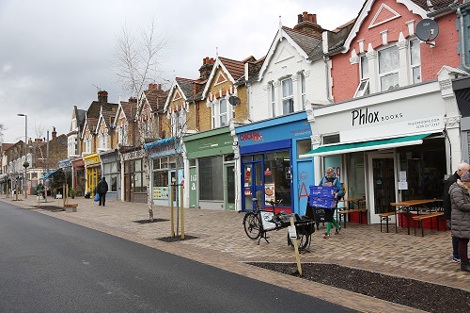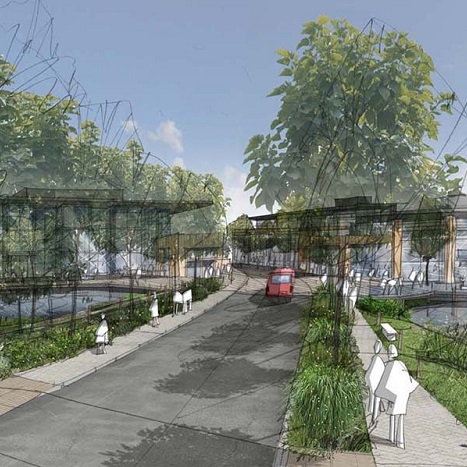


As the focal point of the Leyton Town Centre scheme, the tired and neglected Francis Road shopping area was regenerated in 2017-18 through a highways improvement scheme into an attractive high street, reinvigorating local businesses and encouraging local people to use and enjoy their local shopping area.
The scheme’s vision aimed to:
The Francis Road area was in need of change, as a narrow two-way B-road lined with retail units with residential above, it saw more than 5,000 vehicle movements per day. It suffered from congestion during peak hours, and speeding during quieter periods, it was a chosen ‘rat run’ by motorists avoiding the parallel Leyton High Road, and also a popular route for parents dropping children to four local schools.
Judges Comments
This entry is a prime example of what transport planning can achieve when supported by a clear vision, good management and financial control. The innovative use of the healthy streets methodology and sustainable practices have made Francis Road a better place for all users.
Transport for the North is England’s first Sub-national Transport Body, and is making the case for major transport investment in the North through the innovative work undertaken on the Strategic Development Corridors (SDC’s).

Transport for the North is England’s first Sub-national Transport Body, and is making the case for major transport investment in the North through the innovative work undertaken on the Strategic Development Corridors (SDC’s).
The TfN team developed seven SDC’s, which reflect where the largest gaps between demand and performance currently exist and where there is likely to be the greatest economic potential for connecting the economic assets of the North.
The work on these corridors is unique in taking a multi-modal approach and considers how transport improvements can interact with each other to provide a better A to B customer journey, as well as looking at how people and goods move both now and in the future.
They are the culmination of 18 months of consultation and collaboration with partners, stakeholders, businesses and transport operators across the North. The SDC’s enable Transport for the North to provide Local Transport Authority Partners with the evidence they need to make the case for investment based on the wider impact of projects.
It’s also supporting TfN to make a strong case for investment in an evidence-based infrastructure pipeline for the North of England, a plan and pipeline developed by the North, for the North.
Judges Comments
The judges highly commend this ambitious programme which demonstrates good practice in developing a regional transport strategies. It shows a clear vision supported by innovation and well thought out community consultation.
Nexus 25 is a 25ha strategic employment site in Taunton comprising of a ‘Green Campus’ that will provide a range of flexible premises providing accommodation for research and development, health, education, and digital technology alongside high quality office space, light industrial units and warehouses.

Nexus 25 is a 25ha strategic employment site in Taunton comprising of a ‘Green Campus’ that will provide a range of flexible premises providing accommodation for research and development, health, education, and digital technology alongside high quality office space, light industrial units and warehouses.
The LDO presented unique challenges as it was based on land use parameters and an overall vision for the development, rather than a fixed Masterplan. A traditional Transport Assessment was therefore not appropriate, so PBA developed an innovative “Vision and Validate” solution by working proactively with Somerset County Council and Highways England to set an industry benchmark for a new type of assessment. We worked collaboratively with the local authorities to develop a future vision in terms of transport infrastructure provision, whilst also facilitating the delivery of sustainable and integrated development in line with appropriate transport interventions.
The transport reports included trip rates, modal splits and distributions which could be applied to each potential land use to inform the future development mix. We also identified a transport ‘Menu of Measures’ to achieve a modal shift from the private car to make the development acceptable. Traffic analysis then set thresholds in terms of total vehicle trips which could be accommodated at pinchpoints that are linked to identified transport mitigations and interventions. Importantly, the ‘Menu of Measures’ provides flexibility to allow this strategic employment site for Taunton to come forward within acceptable parameters and be monitored and managed through the agreed Travel Plan.
Judges Comments
The judges commend this innovative approach to development which steps away from a traditional 'predict and provide' transport planning. By embracing a flexible and dynamic travel plan they have created the potential for a sustainable and active future.